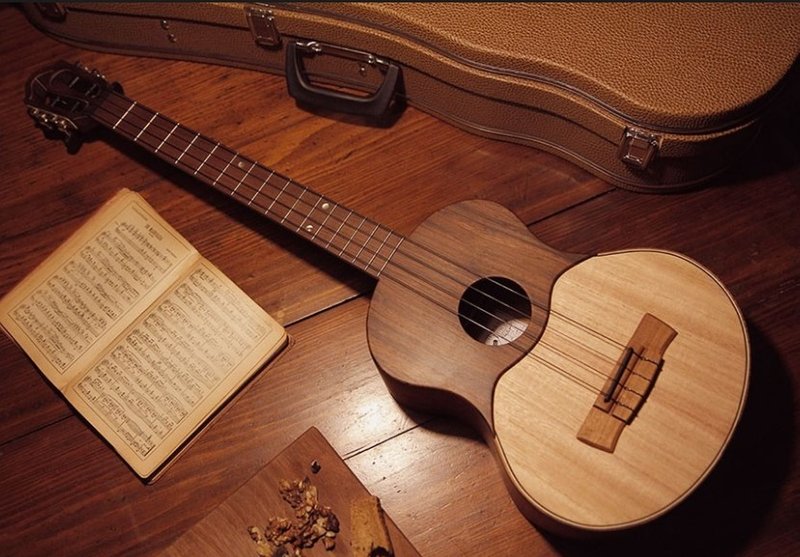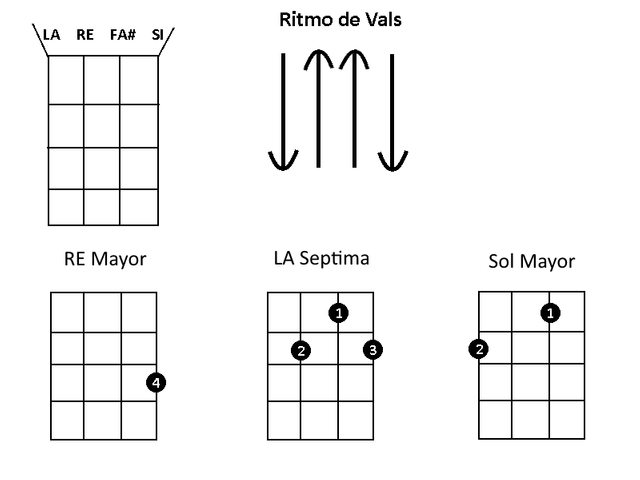Knowing Venezuelan Folklore (The Four)
 In case you do not speak Spanish below, I'll translate it to English
In case you do not speak Spanish below, I'll translate it to English
Sean Todos Bienvenidos Una vez Mas
Un Saludo A Toda la comunidad de Steemit De parte de su anfitrion @BorysFolkandRock...
Hoy les dare a conocer la Historia de Este Instrumento Musical que tambien Es patrimonio Venezolano Llamado "Cuatro"...Cualquier pregunta que tengan pueden hacermela en los comentarios Con Gusto les respondere..Gracias Por El Apoyo que me an brindado Se les agradece mucho :D...
El Cuatro, tiene sus orígenes muy remotos, hay quienes afirman que ya existía en el año 3.000 A.C, porque se han encontrado instrumentos similares en Egipto, los que a su vez son derivados de instrumentos Caldeos-Asirios. En el Siglo XVI, la guitarra contaba con cuatro cuerdas y se tocaba rasgueada; la vihuela poseía seis o siete cuerdas y se tocaba punteada, y la contra canaria poseía cinco cuerdas. Segun Adolfo Salazar, famoso tratadista español sobre instrumentos de cuerdas, el Cuatro llegó a Venezuela con los primeros conquistadores españoles y representa la auténtica guitarra del Renacimiento. Este instrumento es el pariente mas cercano de la guitarra, la cual ha evolucionado hasta producir otros instrumentos parientes.
El Cuatro nace como modificación del Quinto, siempre elaborado en forma muy rústica, usando para ello, trozos de madera autóctono y cuerdas de fibra vegetal, muy duras, las cuales se adelgazaban con conchas de moluscos, más adelante con tripas de animales, siendo disecadas y templadas al sol, a objeto que emitieran sonidos que en cierto modo, igualaran a los expedidos por los instrumentos españoles. En si, los aborígenes y esclavos, buscaban en ese instrumento que acompañaban con guaruras, pitos, tambores y maracas, momentos de esparcimiento y un aliciente para llevar menos pesada la existencia a la que estaban sometidos por los conquistadores.
De allí, el Cuatro se estampa en persistencia, tanto en momentos de tristeza y soledad, como de felicidad y alegría, dentro del criollismo venezolano. Para el Siglo XIX, algunos carpinteros de profesión, en sus ratos de ocio, construían este instrumento, solo por afición a la música, para amenizar las parrandas, bailes típicos, etc. Las primeras transacciones que se hicieron con el Cuatro, son las llamadas permutas por los artesanos, ó sea, que a cambio de éste, los carpinteros recibían turrones, arroz con coco, empanadas, jaleas de mango, y otras meriendas típicas, entre otras cosas.
El Cuatro es un instrumento cuya elaboración es manual y envuelve talento, dedicación y una vida de experiencia. Dado su carácter tradicional, familias enteras en Venezuela se han dedicado por generaciones a la elaboración de este instrumento.
Las maderas mas utilizadas en su fabricación son el cedro y el pino, generalmente el diapasón y la media tapa se fabrican con maderas preciosas, para que no se rayen ni desgasten con el roce de las uñas. Es un instrumento para ser ejecutado como solista y también como acompañante, tanto para música ritual como diversional y está presente en todas las regiones de Venezuela. En Lara, por ejemplo, existe la mayor variedad de cuatros para el acompañamiento del tamunangue, principal manifestación musical del estado. Estos cuatros se diferencian por el tamaño, el número de cuerdas y su afinación. Se pueden encontrar así el cuatro y medio, el cinco, el cinco y medio, el seis y el octavo. El arraigo del cuatro en la música venezolana va hasta su adecuación a los nuevos tiempos, tanto en la música popular como en la académica está presente este instrumento. Los "cuatreros", aunque el término es utilizado en Venezuela para identificar a los ladrones de ganado, cada vez es más popular esta palabra para identificar a los ejecutantes del cuatro. El cuatro llega al siglo XXI y promete quedarse alojado por siempre en la idiosincrasia de los venezolanos, cantando historias, sonando amores, vibrando cultura.
Aqui Les Dejare Una pequeña Guia de como se toca y de su afinacion...Tambien les dejare algunos acordes basicos para que ustedes puedan experimentar...
*In case you do not speak Spanish*
Sean Everyone Welcome Once More
A Greetings To the entire Steemit community On behalf of your host @BorysFolkandRock ...
Today I will give you to know the history of this musical instrument that is also Venezuelan heritage called "Four" ... Any questions you have can make me in the comments With Gusto I will answer .. Thanks for the support you have given me Thank you very much :D ...
The Four, has its very remote origins, there are those who claim that it existed in the year 3,000 BC, because similar instruments have been found in Egypt, which in turn are derived from Chaldean-Assyrian instruments. In the sixteenth century, the guitar had four strings and played strummed; the vihuela had six or seven strings and was played dotted, and the contra canary had five strings. According to Adolfo Salazar, famous Spanish conductor on string instruments, el Cuatro came to Venezuela with the first Spanish conquerors and represents the authentic Renaissance guitar. This instrument is the closest relative of the guitar, which has evolved to produce other relative instruments.
The Four was born as a modification of the Fifth, always elaborated in a very rustic way, using for it, pieces of native wood and strings of vegetable fiber, very hard, which were thinned with shells of mollusks, later with guts of animals, being dissected and tempered to the sun, to object that they issued sounds that in certain way, equal to those issued by the Spanish instruments. In itself, the aborigines and slaves, looked for in that instrument that accompanied with guaruras, whistles, drums and maracas, moments of relaxation and an incentive to take less weight the existence to which they were subjected by the conquerors.
From there, the Four is stamped on persistence, both in moments of sadness and loneliness, as well as happiness and joy, within the Venezuelan criollismo. For the nineteenth century, some carpenters by profession, in their leisure time, built this instrument, just for the love of music, to entertain the parties, typical dances, etc. The first transactions that were made with the Four are the so-called exchanges by artisans, that is, in exchange for this, the carpenters received nougat, rice with coconut, empanadas, mango jellies, and other typical snacks, among other things .
The Four is an instrument whose elaboration is manual and involves talent, dedication and a life of experience. Given its traditional character, entire families in Venezuela have dedicated themselves for generations to the development of this instrument.
The woods most used in its manufacture are cedar and pine, usually the fingerboard and the half lid are made with precious woods, so that they do not scratch or wear with the rubbing of the nails. It is an instrument to be performed as a soloist and also as a companion, both for ritual and diversional music and is present in all regions of Venezuela. In Lara, for example, there is the greatest variety of cuatros for the accompaniment of tamunangue, the main musical manifestation of the state. These four are differentiated by the size, the number of strings and their tuning. You can find four and a half, five, five and a half, six and eight. The rooting of the cuatro in Venezuelan music goes until its adaptation to the new times, as much in the popular music as in the academic one this instrument is present. The "rustlers", although the term is used in Venezuela to identify the cattle thieves, this word is increasingly popular to identify the performers of the four. The four arrives at the 21st century and promises to stay hosted forever in the idiosyncrasies of Venezuelans, singing stories, sounding love, vibrating culture.
Here I will leave you a small guide of how you play and its tuning ... I will also leave you some basic chords so that you can experience .
I hope you like them and that you are also motivated to learn more about this beautiful instrument ... Here is a page where you can see everything about this instrument. Https://tucuatro.com/en/
Until The Next :D and a hug

Espero que les alla Gustado Amigos y que tambien se motiven en aprender mas sobre este instrumento tan hermoso...Aqui le dejo una pagina donde podran ver completamente todo sobre este instrumento.. https://tucuatro.com/es/
Hasta La Proxima :D y un abrazooo